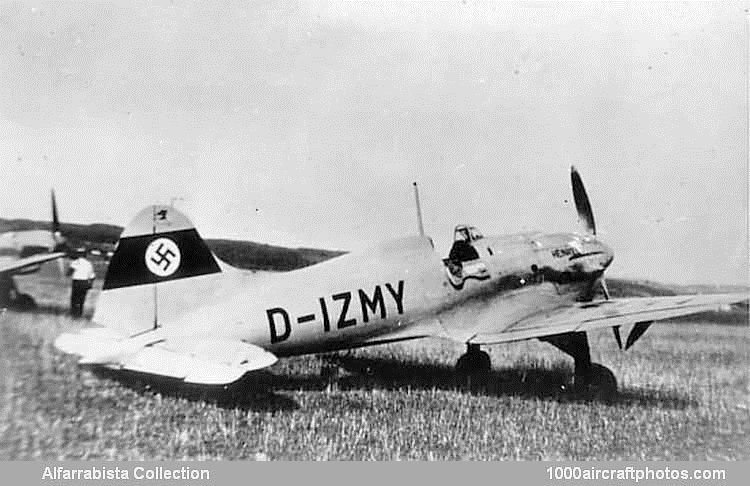The second and third prototypes, the He 112 V2 and V3, by which it was joined in November 1935 and January 1936 respectively, were powered by the 640 hp Junkers Jumo 210C and were initially otherwise similar until, in the spring of 1936, span and wing area were reduced to 37 ft 8.75 in (11.50 m) and 232.5 sq.ft (21.60 sq.m).
The fourth prototype, the He 112 V4, pictured here, was in fact the first pre-series He 112A fighter with a 680 hp Jumo 210Da engine, a new wing of semi-elliptical planform and new horizontal tail surfaces. This aircraft was sent to Spain in December 1936 for operational evaluation with the Legion Condor.
Two further A-series aircraft were meanwhile completed, these being the He 112 V5, which was essentially similar to the V4, and the V6 with radiator bath and vertical tail changes, and the V8, which, completed after the A-series had been overtaken by the radically revised B-series, served as a Daimler-Benz engine test bed, being fitted with a 1,000 hp DB 600Aa. The V8 was later re-engined with the Jumo 210Da, and, in February 1937, assigned to the rocket propulsion development program.
The V3, V4, V5 and V6 were all fitted with twin 0.311 in (7.9 mm) machine guns. The V5 was subsequently modified to take an engine-mounted 0.787 in (20 mm) cannon with which it was shipped to Spain. Dubbed the Kanonvögel (Cannon-Bird), it saw operational use with the Legion Condor."
The following data relate to the He 112 V4 as representative of the A-series.
Span: 37 ft 8.75 in (11.50 m)
Length: 29 ft 6.33 in (9.00 m)
Height: 12 ft 1.67 in (3.70 m)
Wing area: 249.72 sq.ft (23.20 sq.m)
Weight empty: 3,704 lb (1,680 kg)
Loaded weight: 4,916 lb (2,230 kg)
Max speed: 303 mph (488 kmh) at 11,485 ft (3,500 m)
Climb: to 3,281 ft (1,000 m) 1 min 34 sec
Service ceiling: 26,245 ft (8,000 m)
